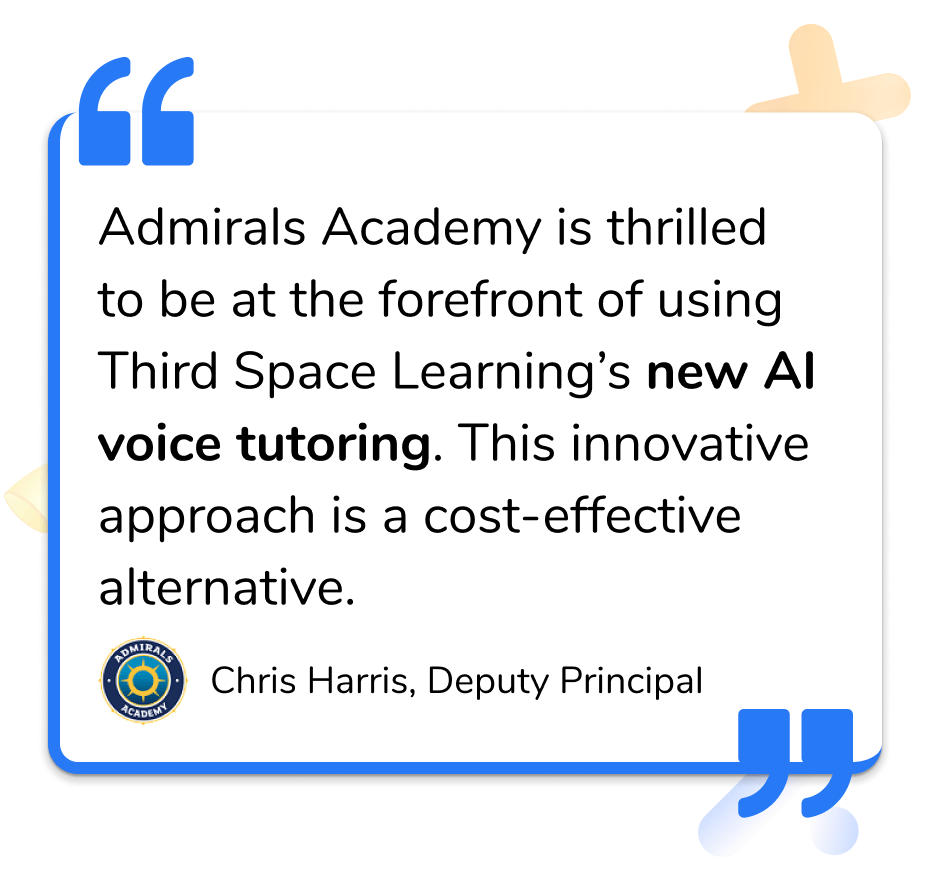THIRD GRADE MATH TUTORING
Build confidence and a love for math in 3rd grade
Third grade students are beginning to move on from the basics of math and learn how to apply their grade-level knowledge to more complex problems.
But with the skill levels in each class becoming more varied, it can be hard to give every student the support they need.
Ensure students don’t fall behind or lose confidence through personalized one-on-one online math tutoring with their own dedicated specialist tutor.
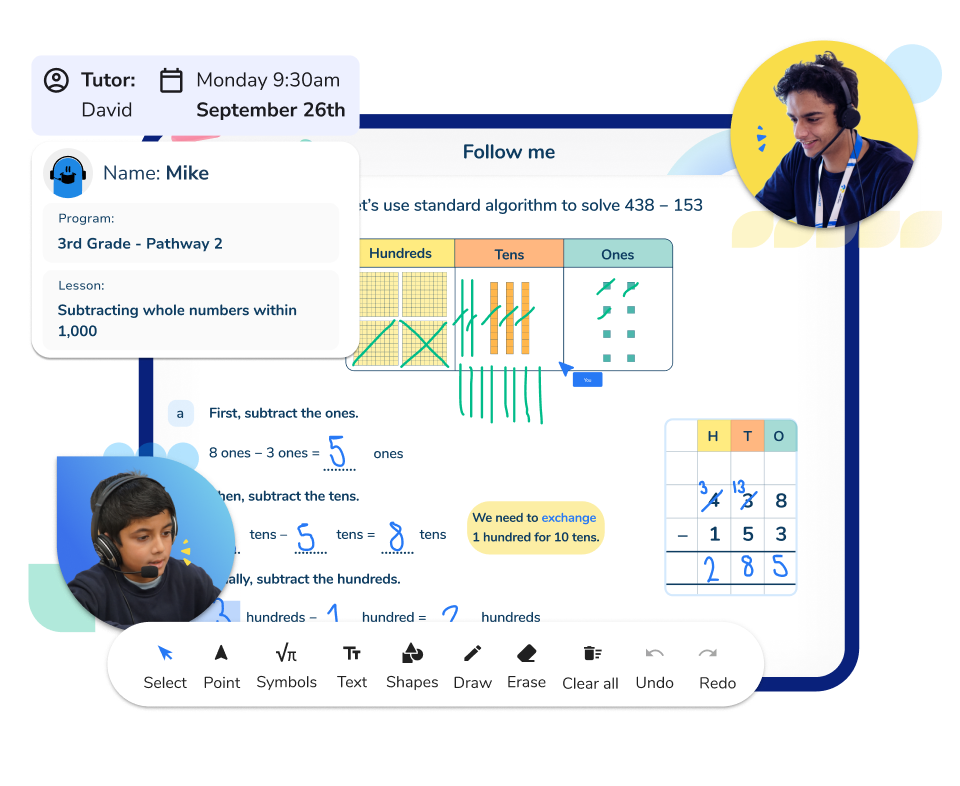
The children are very much enjoying it. The tutors can work on gaps of knowledge and misconceptions which are harder to address in a whole class situation.
Katie Forrest
Special Education Teacher
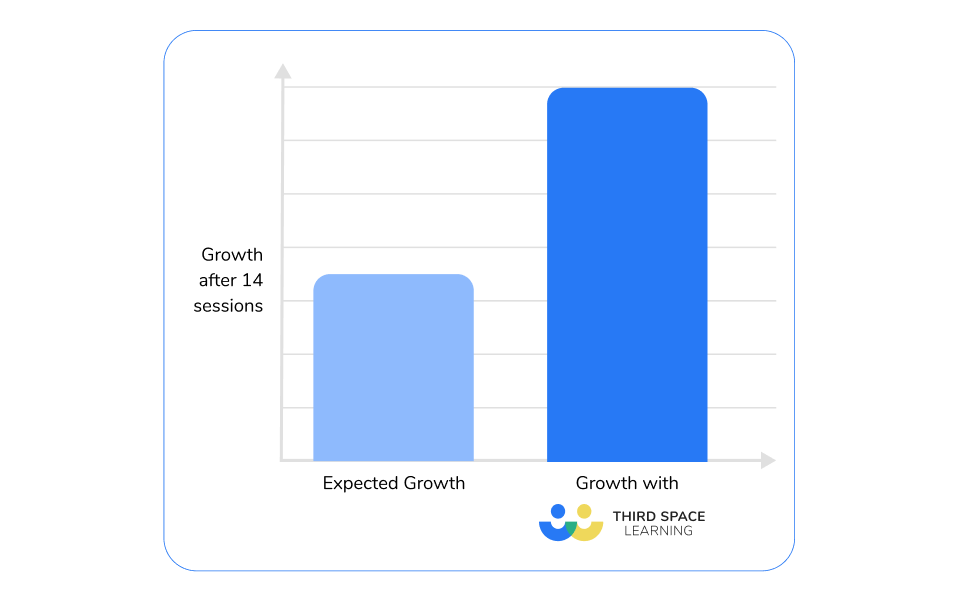
Benefits of 3rd Grade Math Tutoring
Starting math tutoring in third grade results in a greater impact than leaving it until middle school or even high school.
Enroling 3rd graders in a math tutoring program helps accelerate progress and understanding of math concepts before the achievement gap widens in later years.
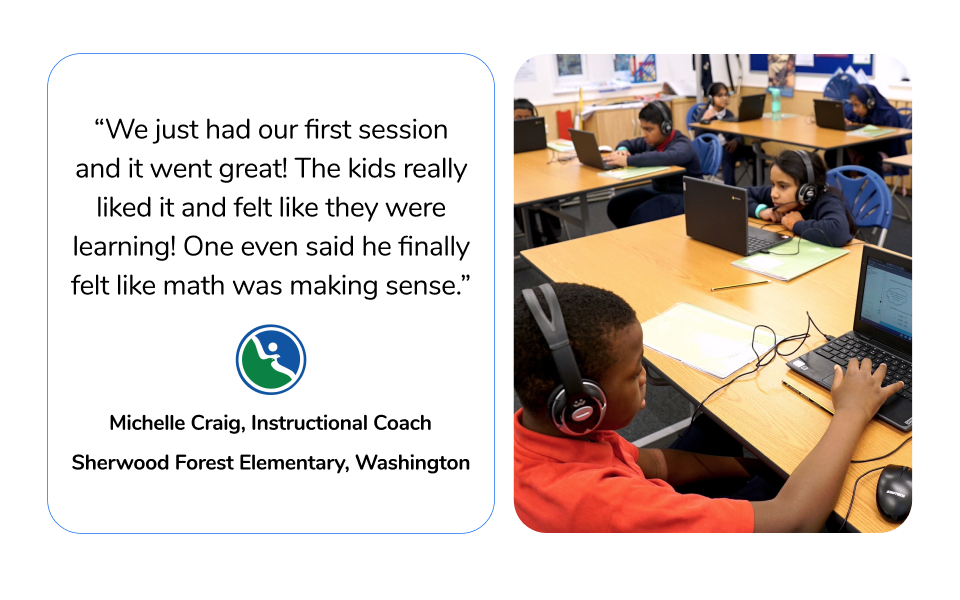
Develop problem solving
3rd graders are building on their 2nd grade math skills, tackling complex problem-solving and harder word problems.
One-on-one online tutoring sessions provide extra math opportunities for third grade students struggling to keep up with the pace of math lessons and more difficult math concepts.
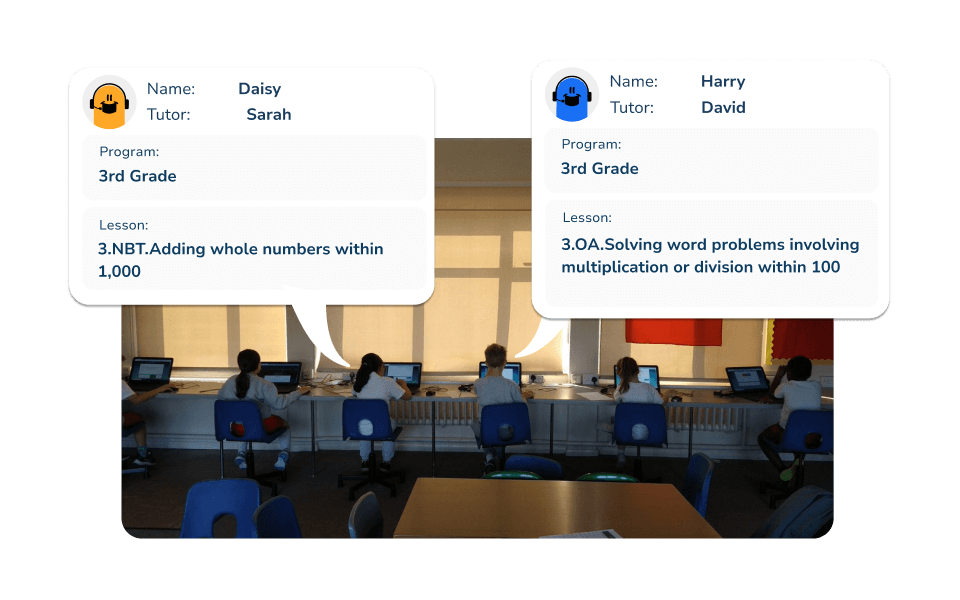
Individualized tutoring service
Often, 3rd graders benefit from different teaching styles and differentiating worksheets for a whole class can be challenging.
Each student works one-on-one with a private tutor who adapts instructions and math lesson content in real-time according to the student’s needs.
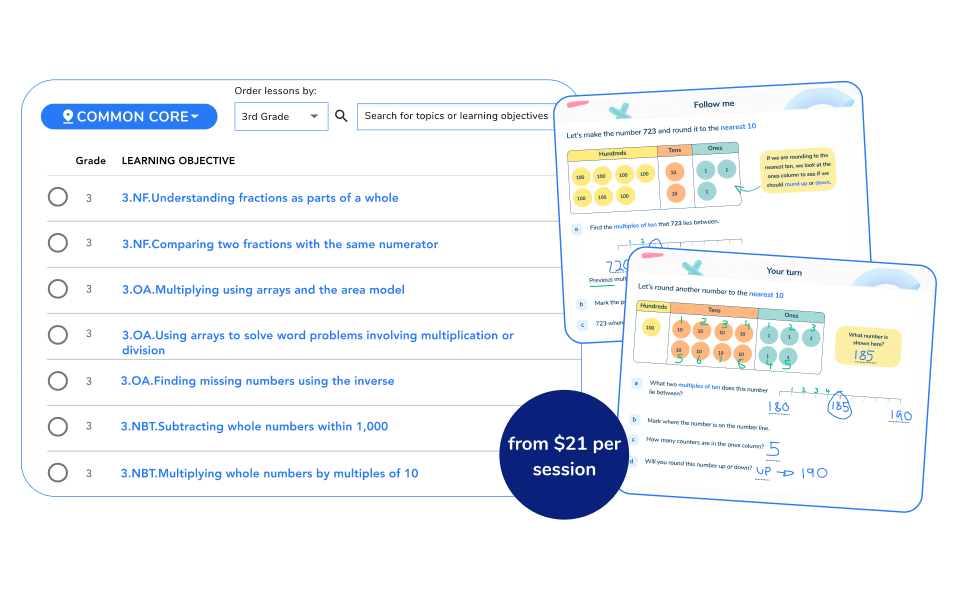
Expert 3rd grade math tutoring
All math lesson plans are created by a team of math teachers and cover the 3rd grade standards for every US state and Common Core.
Third Space Learning’s 3rd grade tutors are STEM specialists, it’s like bringing in multiple high-quality interventionists into your elementary school for 3rd grade – without the price tag.
Preview 3rd grade math tutoring lessons
Preview 3rd grade math tutoring lessons
Specially created lessons designed to build conceptual understanding and enable tutors to respond to students’ needs in real-time:
-
Example lesson 1
-
Example lesson 2
-
Example lesson 3
Rounding whole numbers to the nearest 10
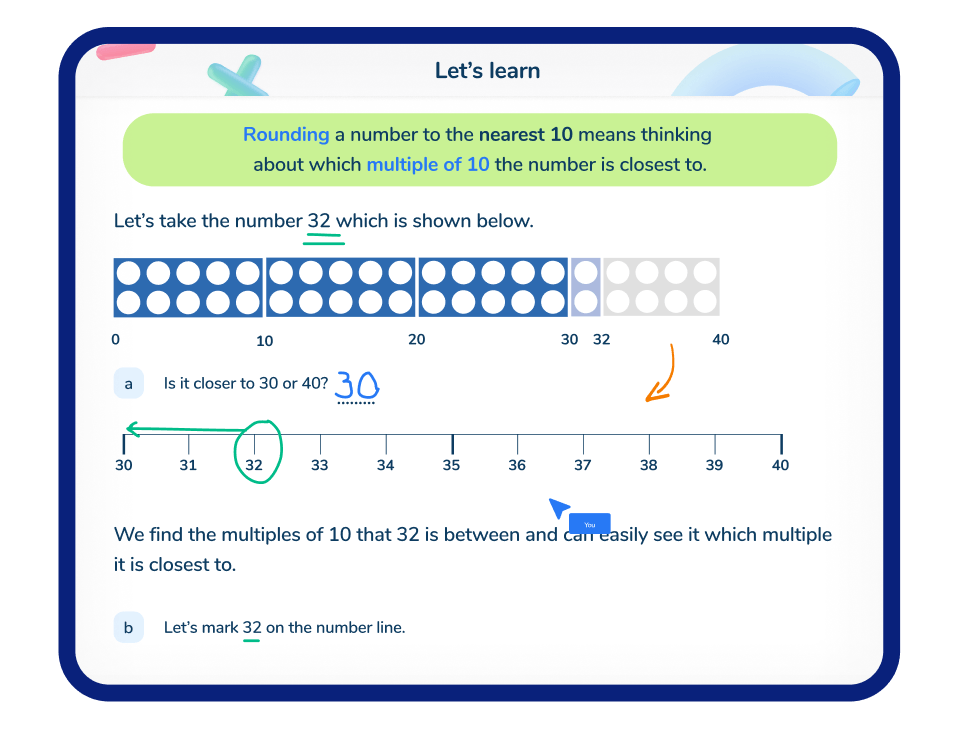
Let’s learn
The first question introduces each concept and helps students feel ready to learn
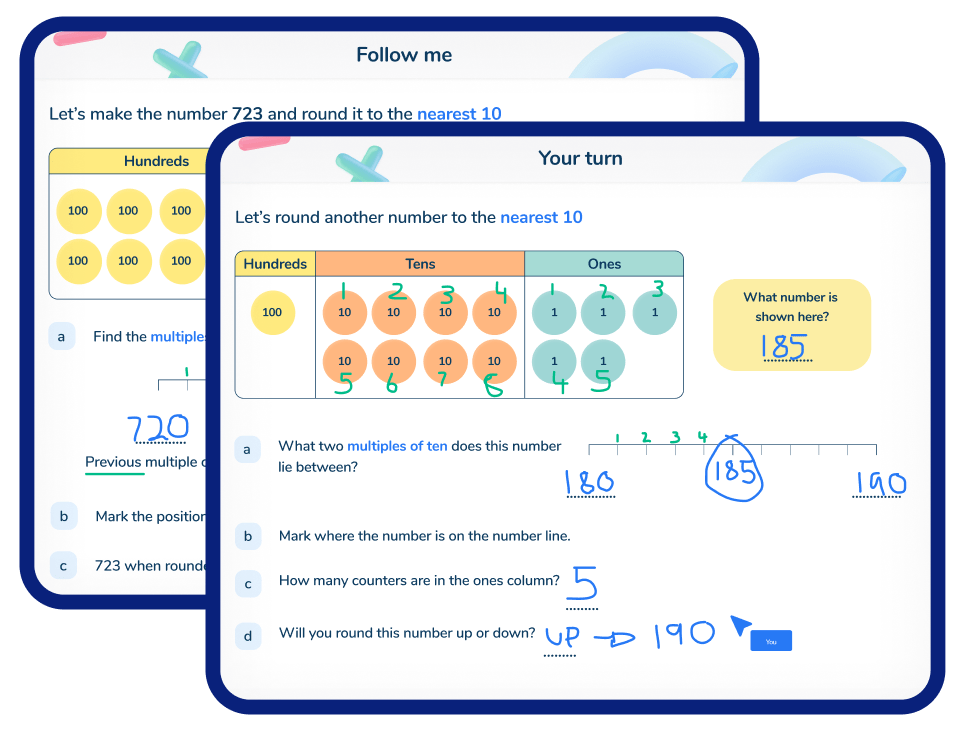
Follow me + your turn
Students work through a scaffolded example with their tutor before trying a similar question on their own
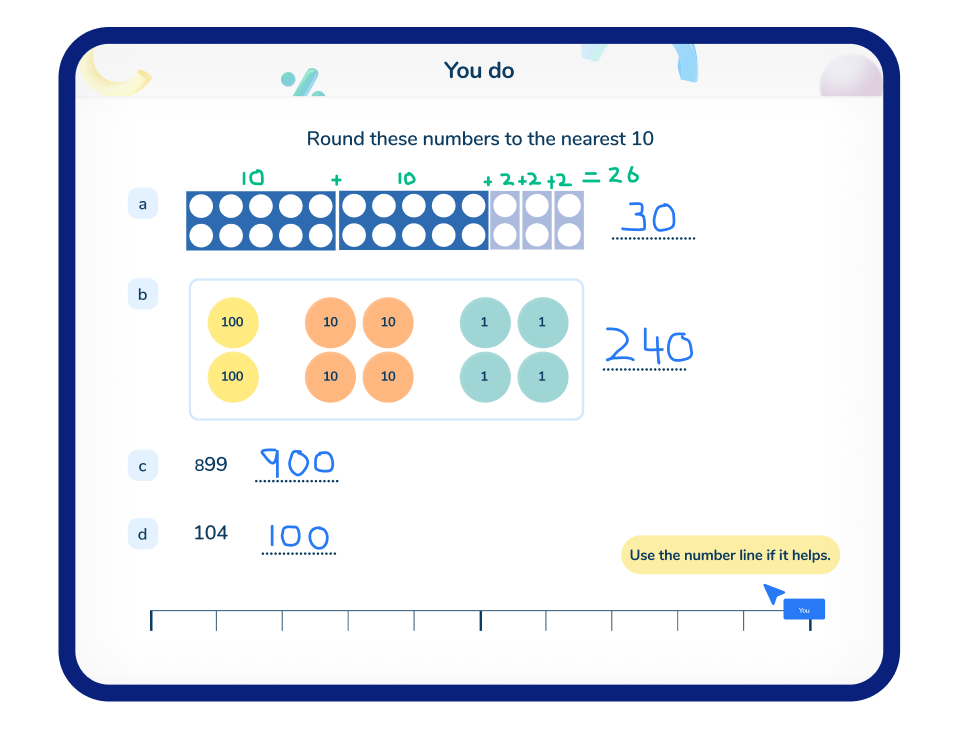
You do
A carefully sequenced next question ensures students can apply knowledge to different contexts
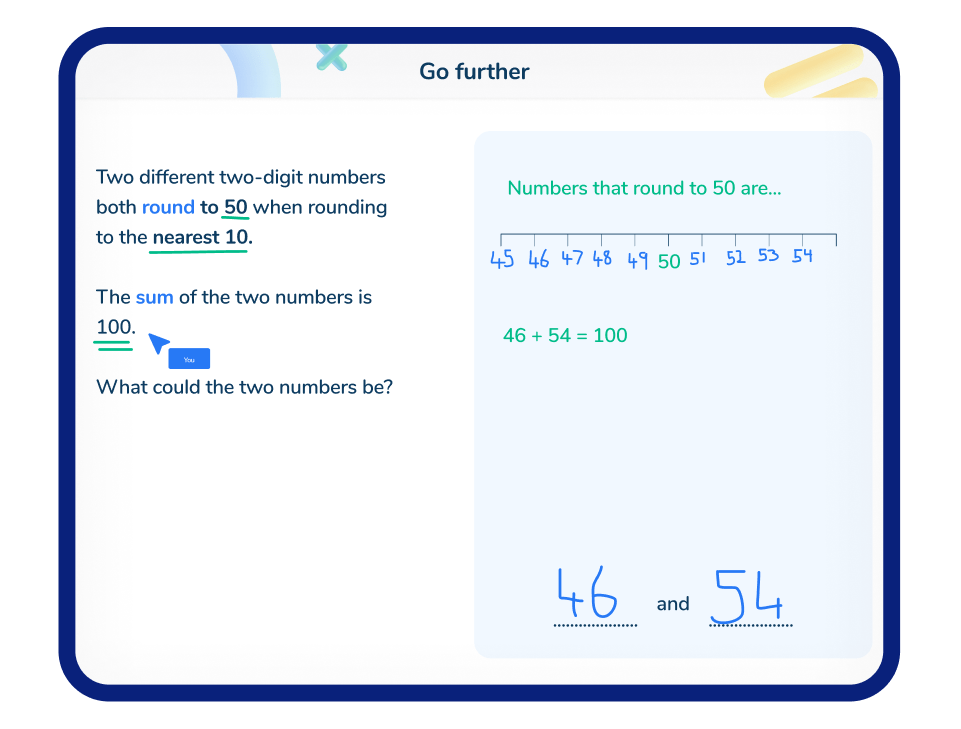
Go further
This gives students an opportunity to apply their knowledge to problem solving and reasoning questions
Subtracting whole numbers within 1,000
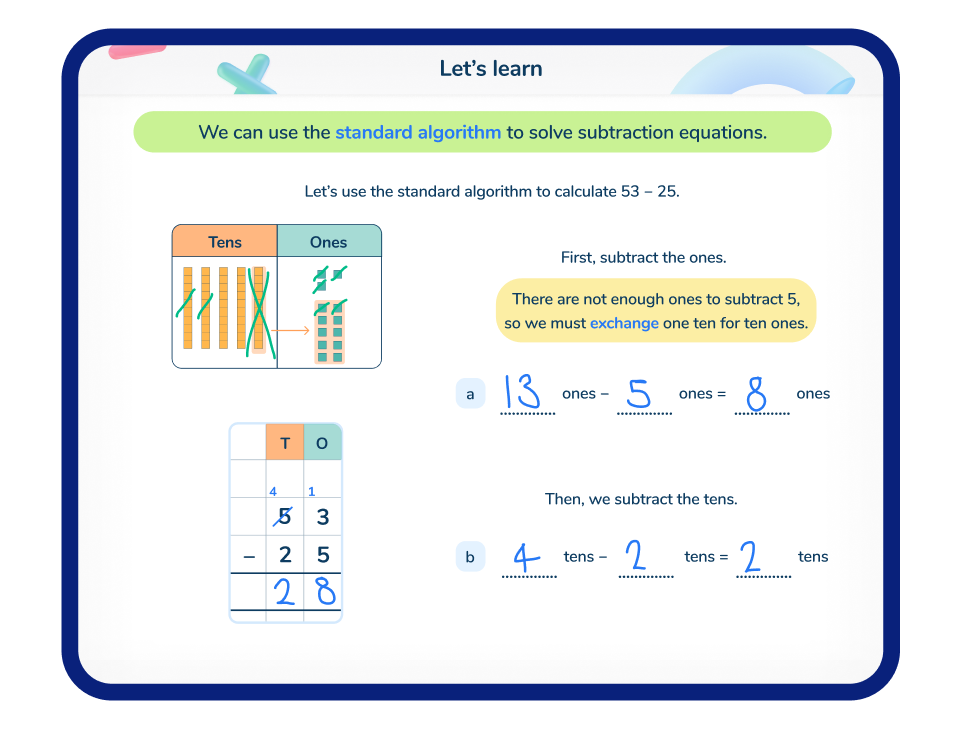
Let’s learn
The first question introduces each concept and helps students feel ready to learn
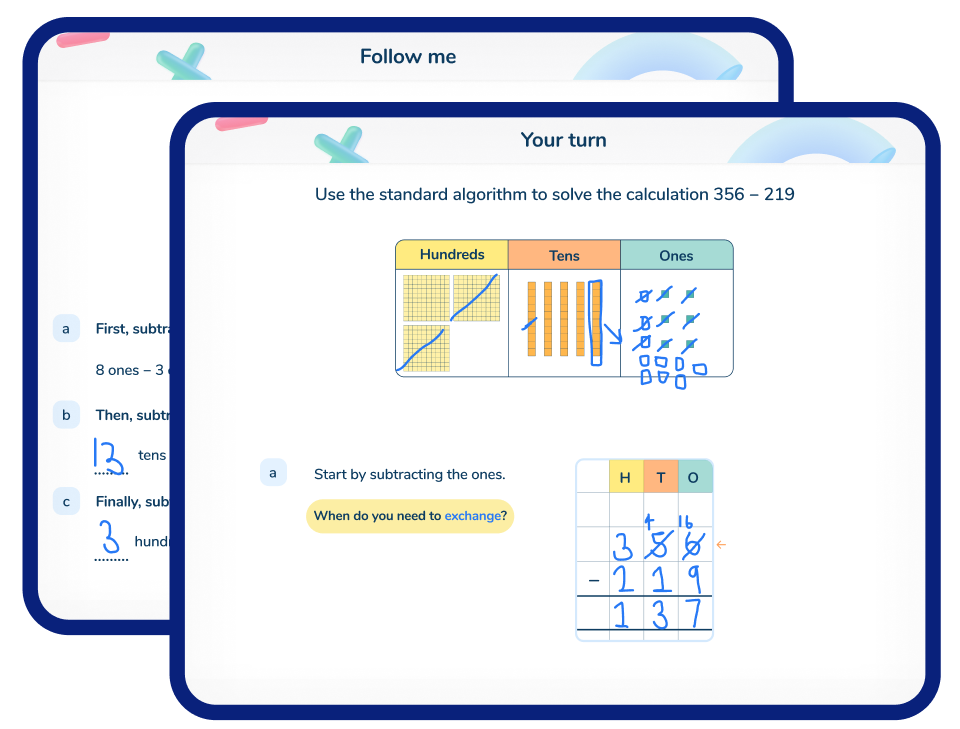
Follow me + your turn
Students work through a scaffolded example with their tutor before trying a similar question on their own
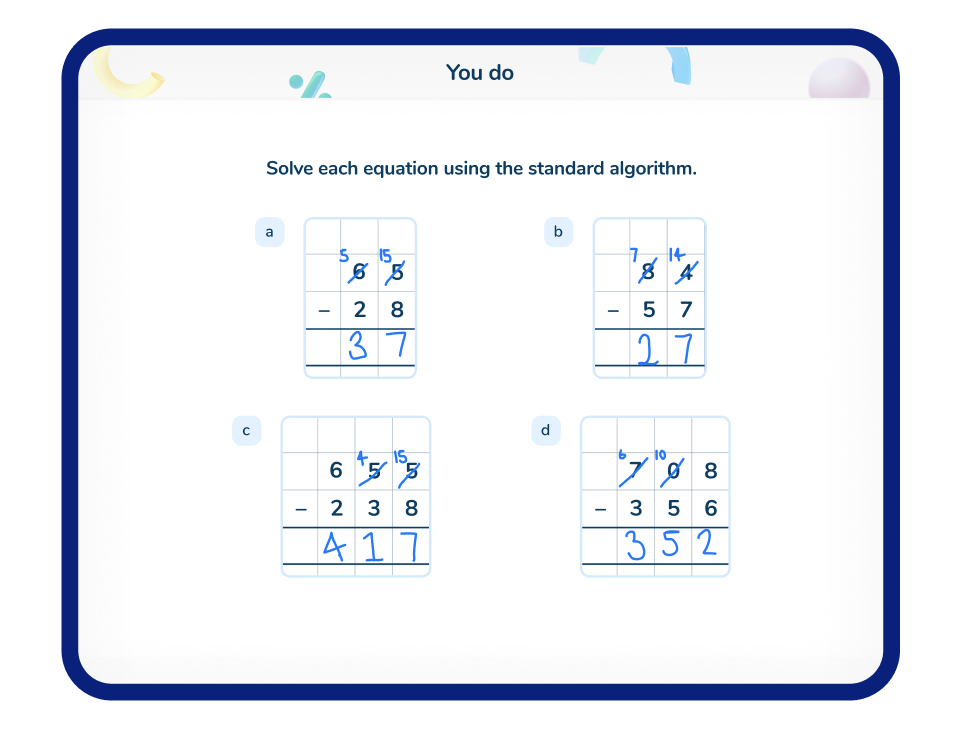
You do
A carefully sequenced next question ensures students can apply knowledge to different contexts
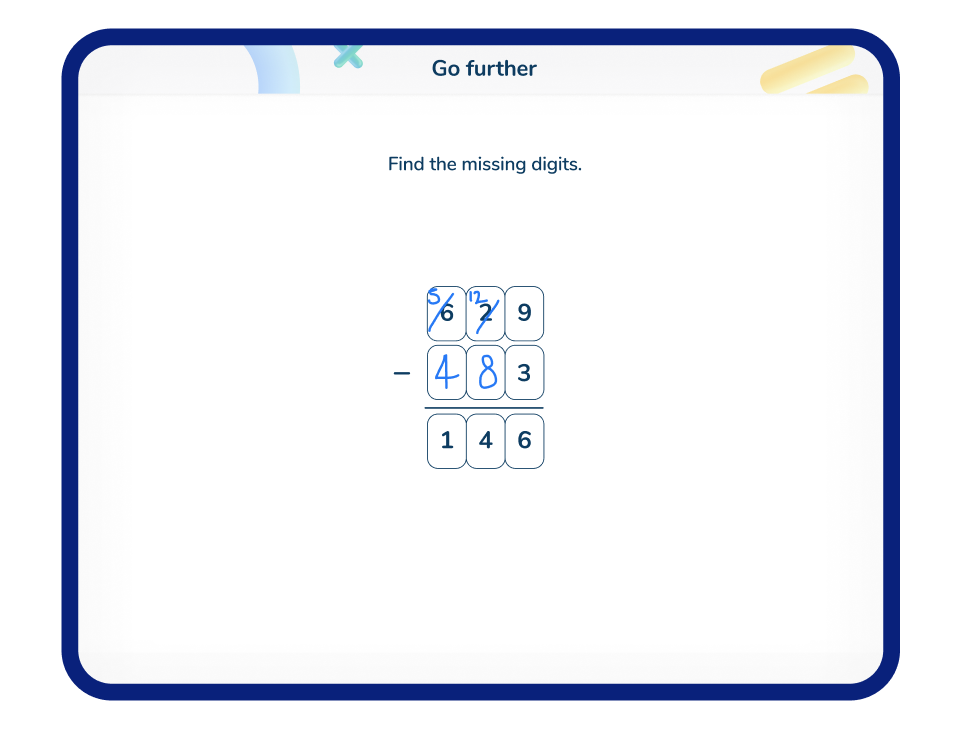
Go further
This gives students an opportunity to apply their knowledge to problem solving and reasoning questions
Multiplying whole numbers by multiples of 10
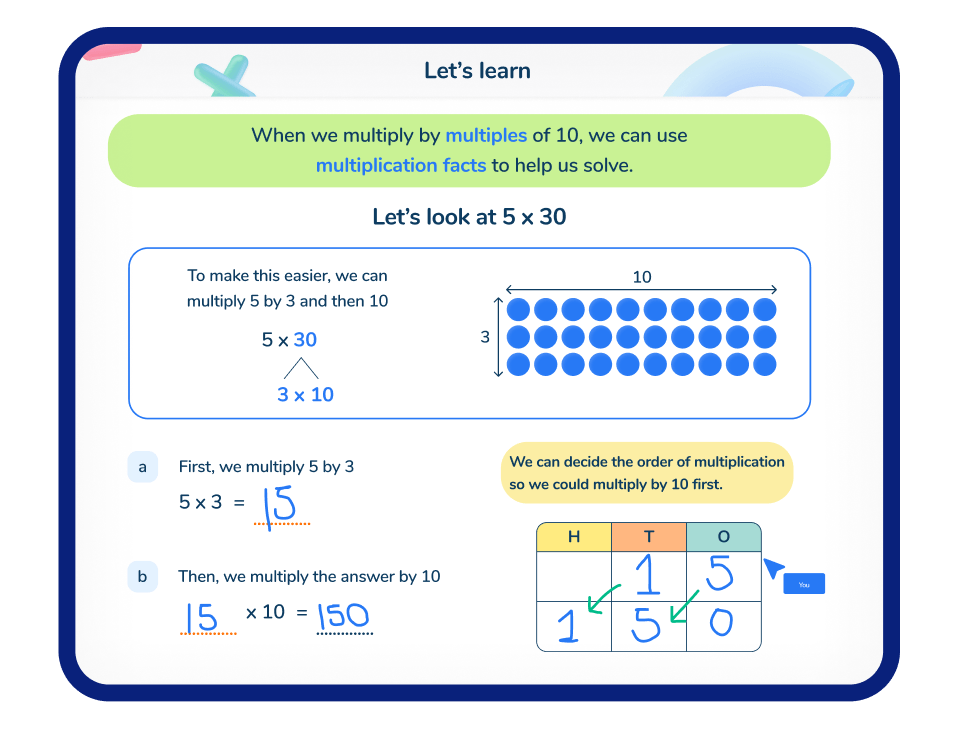
Let’s learn
The first question introduces each concept and helps students feel ready to learn
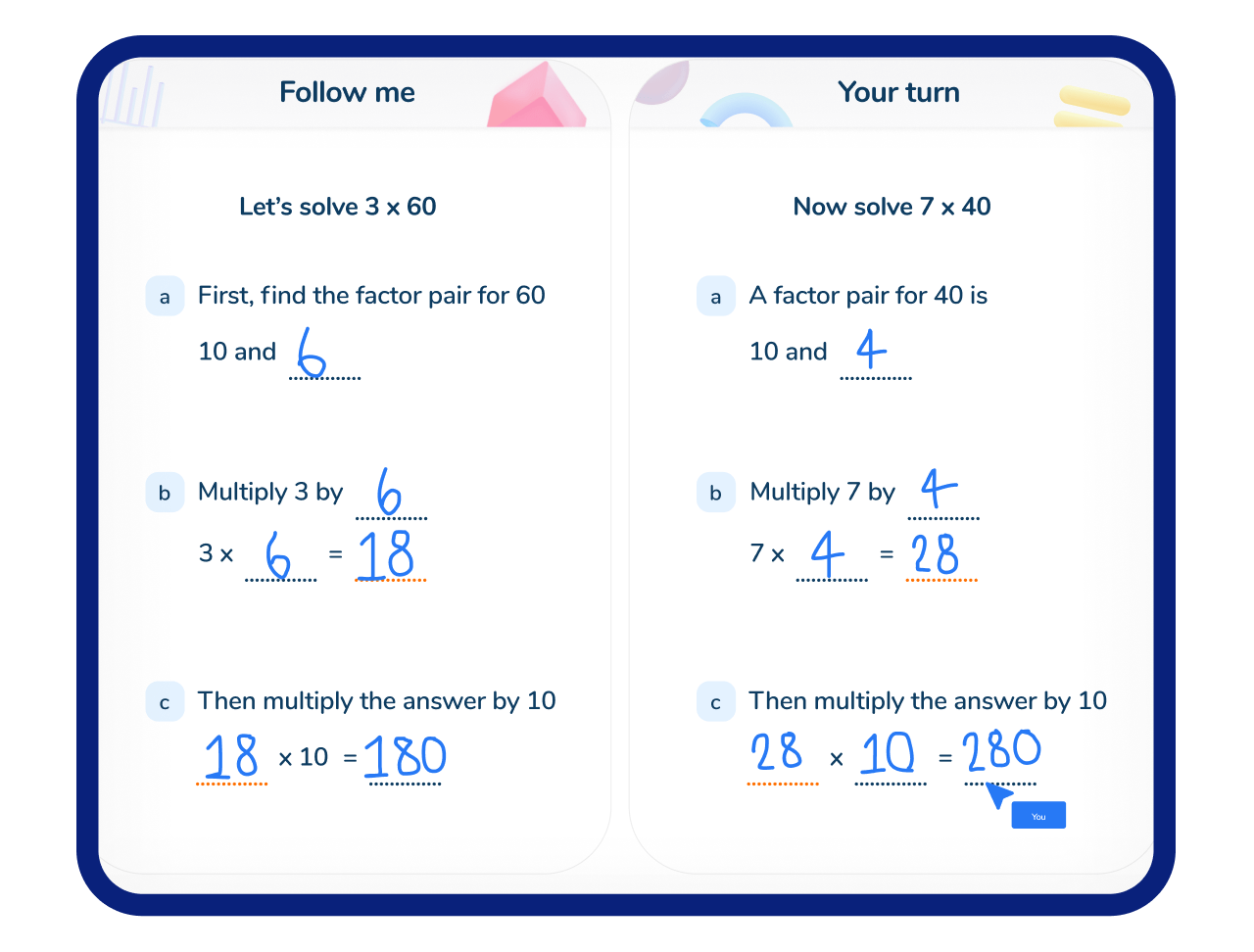
Follow me + your turn
Students work through a scaffolded example with their tutor before trying a similar question on their own
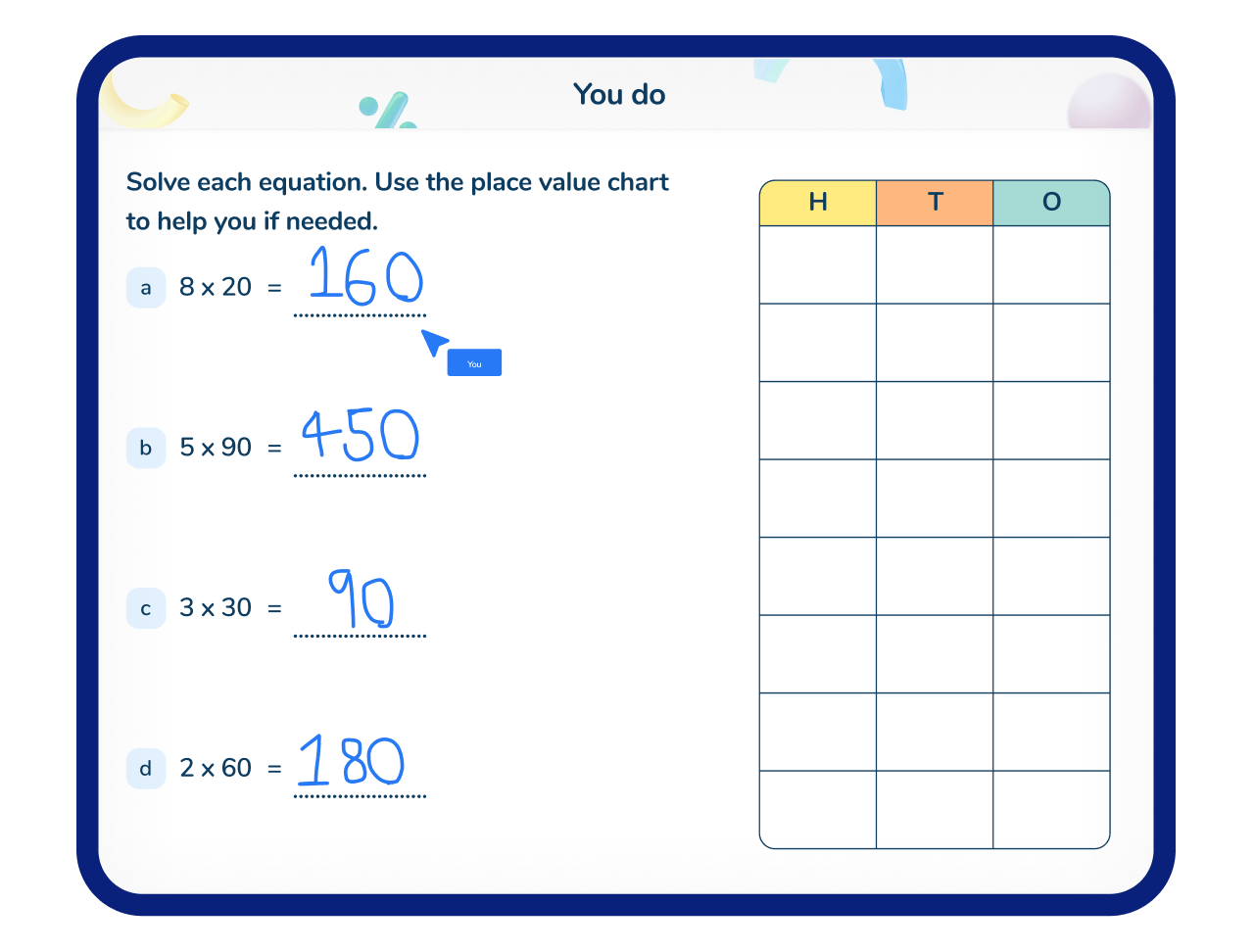
You do
A carefully sequenced next question ensures students can apply knowledge to different contexts
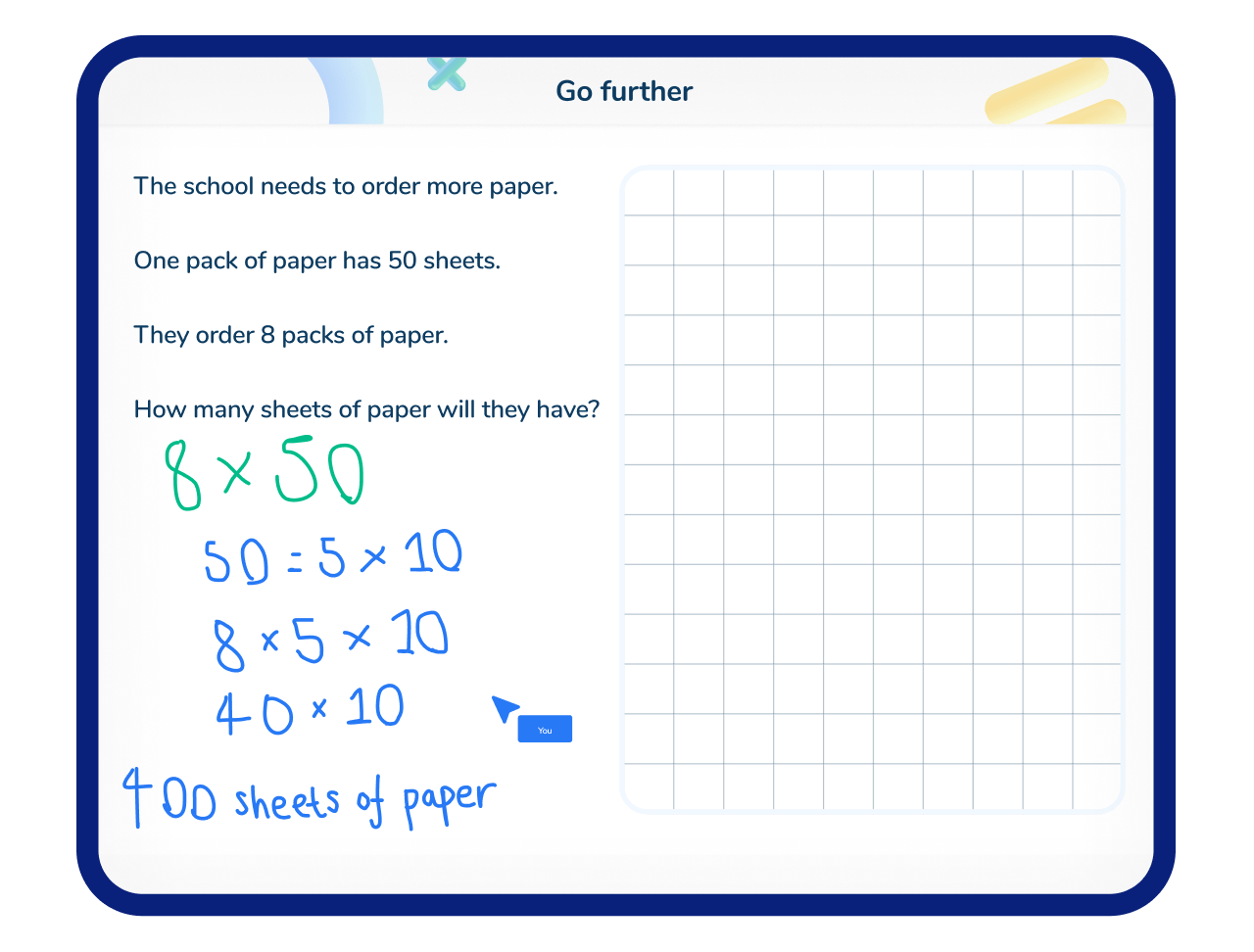
Go further
This gives students an opportunity to apply their knowledge to problem solving and reasoning questions
3rd grade scope and sequence
Whether you have students who would benefit from more opportunities to practice 3rd grade standards or who have existing gaps from grades 1-2, we’ve got a program for your 3rd grade students.
Click on the program name to view the full scope and sequence.
Whether you have students who would benefit from more opportunities to practice 3rd grade standards or who have existing gaps from grades 1-2, we’ve got a program for your 3rd grade students.
Click on the program name to view the full scope and sequence.
3rd Grade Program
Best for: Students with gaps from 3rd grade
Programme goal: Master 3rd grade standards
3rd Grade Program
Learning objectives covered in this program:
Third Space Learning lessons are available for all state standards and for Common Core.
Interpreting products of whole numbers
Interpreting quotients of whole numbers
Multiplying using arrays and the area model
Using arrays to solve word problems involving multiplication or division
Solving word problems involving multiplication or division within 100
Using pictures to show the inverse
Finding missing numbers using the inverse
Using the commutative property to multiply
Using the associative property to multiply
Using the distributive property to multiply
Using doubling and halving to find multiplication facts
Using known facts to solve other multiplication facts
Using multiplication and division facts up to 12 x 12
Two-step word problems: addition and subtraction
Two-step word problems using all four operations
Assess reasonableness of answers
Identify arithmetic patterns
Rounding whole numbers to the nearest 10
Rounding whole numbers to the nearest 100
Adding whole numbers within 1,000
Adding whole numbers within 1000 using strategies based on place value
Subtracting whole numbers within 1000 using strategies based on place value
Subtracting whole numbers within 1,000
Multiplying whole numbers by multiples of 10
Understanding fractions as parts of a whole
Understanding fractions on a number line
Understanding equivalent fractions
Recognizing and making equivalent fractions
Comparing two fractions with the same numerator
Comparing two fractions with the same denominator
Writing and telling time to nearest minute
Measuring time intervals in minutes
Solving word problems involving time intervals
Solving problems involving liquid volume and mass
Solving word problems based on bar graphs
Solving word problems based on picture graphs
Measuring lengths using rulers marked with halves and fourths
Creating line plots to represent data
Measuring area by counting unit squares
Multiplying to find area
Finding area of rectilinear figures
Solving problems involving perimeters of polygons
Reasoning with shapes and their attributes
Partition shapes into parts with equal areas
About this program
Lessons focus on securing 3rd grade standards to enable students to successfully move on to 4th grade.
How are lessons ordered?
The default order has been set by our academic team to align with your state standards. Schools can pick one of our alternative sequences to re-prioritize domains, or send us their assessment data for us to pick the most appropriate sequence.
Want to speak to our friendly team? Book a call.
2nd Grade Program
Best for: Students with gaps from 2nd grade
Programme goal: Master 2nd grade standards
2nd Grade Program
Learning objectives covered in this program:
Third Space Learning lessons are available for all state standards and for Common Core.
Solving two-step word problems involving unknowns in situations
Adding within 20 using mental strategies
Subtracting within 20 using mental strategies
Even and odd numbers using visuals
Using arrays to show grouping
Understanding that a three-digit number represents hundreds, tens, and ones
Knowing that 10 tens are equal to 100
Counting within 1,000
Skip counting by 5s, 10s and 100s
Read and write numbers to 1,000
Comparing two 3-digit numbers
Adding 2-digit numbers
Subtracting 2-digit numbers
Adding strings of 2-digit numbers
Adding within 1,000 using models and drawings
Subtracting within 1,000 using models and drawings
Adding within 1,000 using number lines
Subtracting within 1,000 using number lines
Adding and subtracting 10s and 100s
Understanding units of measurement for length
Measuring objects using different length units
Comparing the lengths of objects
Solving problems related to length
Representing length on a number line
Telling and writing time to nearest 5 minute
Solving problems involving money
Drawing line plots with measurement data
Solving problems including picture graphs
Solving problems including bar graphs
Understanding shapes and their attributes
Partitioning rectangles into rows and columns
Partitioning shapes into equal shares
About this program
Lessons focus on securing 2nd grade standards to enable students to successfully move on to 3rd grade.
How are lessons ordered?
The default order has been set by our academic team to align with your state standards. Schools can pick one of our alternative sequences to re-prioritize domains, or send us their assessment data for us to pick the most appropriate sequence.
Want to speak to our friendly team? Book a call.
1st Grade Program
Best for: Students with gaps from 1st grade
Programme goal: Master 1st grade standards
1st Grade Program
Learning objectives covered in this program:
Third Space Learning lessons are available for all state standards and for Common Core.
Solving word problems: result unknown
Solving word problems: change unknown
Solving word problems: start unknown
Solving word problems: total unknown
Solving word problems: addend unknown
Solving word problems: both addends unknown
Solving word problems: difference unknown
Solving word problems: bigger unknown
Solving word problems: smaller unknown
Two-step word problems within 20
Solving word problems: adding multiple numbers
Using properties to add
Adding and subtracting with counting
Making 10 to add or subtract
Using the relationship between addition and subtraction
Understanding the equal sign
Counting within 120
Read and write numbers to 100 using base-ten numerals, number names and expanded form
Understanding a number as tens and ones
Comparing two-digit numbers
Strategies to add within 100
Strategies for adding 2-digit numbers
Adding and subtracting tens
Subtracting with exchanging within 100
Telling the time to hours and half-hours
Representing data
Shape attributes
Partitioning circles and rectangles
About this program
Lessons focus on securing 1st grade standards to enable students to successfully move on to 2nd grade.
How are lessons ordered?
The default order has been set by our academic team to align with your state standards. Schools can pick one of our alternative sequences to re-prioritize domains, or send us their assessment data for us to pick the most appropriate sequence.
Want to speak to our friendly team? Book a call.
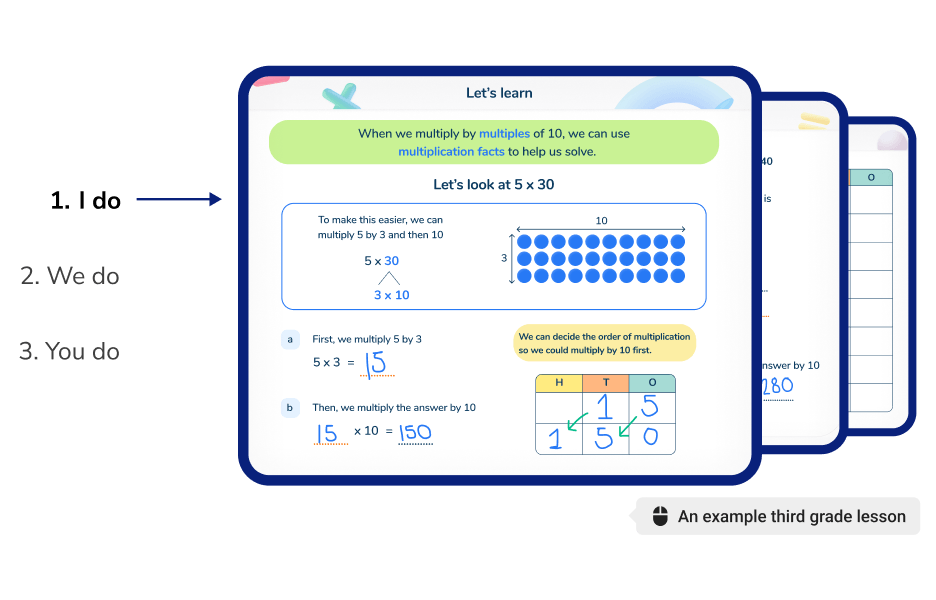
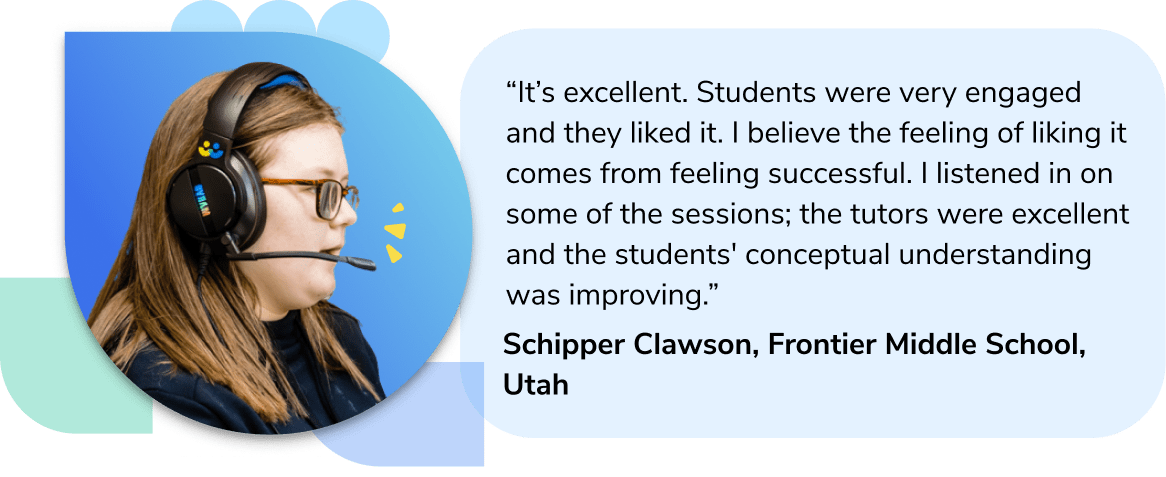
How it works in schools like yours
Personalized one-on-one online tutoring for multiple 3rd graders at once, delivered by specialist math tutors at a day and time that works for your school.
Book a free tutoring demo for your school or district
Explore the online classroom, preview lessons aligned to your state’s standards and see for yourself why 4,000+ schools like yours have chosen high impact one-on-one math tutoring from Third Space Learning:
Proven to accelerate math growth in half the time
2.4x cheaper than the average cost of one-on-one tutoring
Scalable and easy-to-implement across multiple grade levels and schools
Flexible scheduling according to your school and district’s needs
You can learn more about how we keep your data safe and secure in our privacy policy.
Frequently asked questions
How can I help my 3rd grader with math?
To help prepare your 3rd grader for the school year ahead, engage them in everyday math-related activities like cooking or shopping to reinforce concepts they’re learning, such as multiplication, division, and fractions. Maintain a positive attitude towards math, the way you act can greatly influence their confidence and interest in the subject.
What math level should a 3rd grader be at?
A 3rd grader should typically have a good grasp of basic addition and subtraction. They will be introduced to basic algebra through multiplication and division. They should also be familiar with fractions, place value up to the thousands, basic geometry, using bar graphs and solving simple word problems.
How do I prepare for math 3rd grade?
To prepare for 3rd grade math, ensure 1st grade and 2nd grade math concepts have been mastered. Focus on addition and subtraction within 1000, multiplication and division, fractions and bar and picture graphs.
